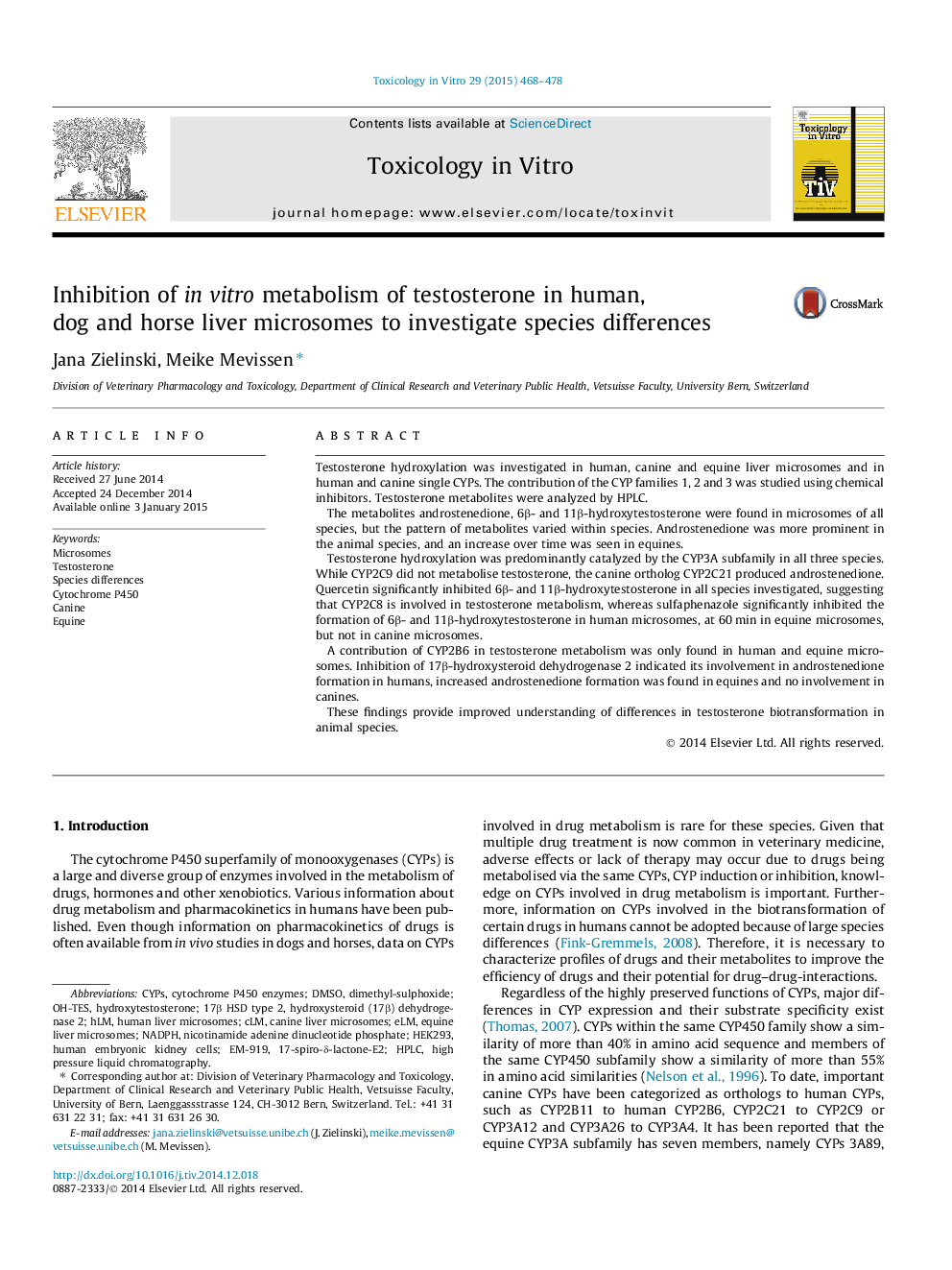| کد مقاله | کد نشریه | سال انتشار | مقاله انگلیسی | نسخه تمام متن |
|---|---|---|---|---|
| 2602482 | 1133762 | 2015 | 11 صفحه PDF | دانلود رایگان |

• Species differences in testosterone metabolism were found.
• The CYP3A subfamily is involved in testosterone metabolism in all three species.
• CYP2C9 did not metabolize testosterone, while the canine ortholog did.
• Clopidogrel, but not sulfaphenazole, inhibited androstenedione in CYP2C21.
Testosterone hydroxylation was investigated in human, canine and equine liver microsomes and in human and canine single CYPs. The contribution of the CYP families 1, 2 and 3 was studied using chemical inhibitors. Testosterone metabolites were analyzed by HPLC.The metabolites androstenedione, 6β- and 11β-hydroxytestosterone were found in microsomes of all species, but the pattern of metabolites varied within species. Androstenedione was more prominent in the animal species, and an increase over time was seen in equines.Testosterone hydroxylation was predominantly catalyzed by the CYP3A subfamily in all three species. While CYP2C9 did not metabolise testosterone, the canine ortholog CYP2C21 produced androstenedione. Quercetin significantly inhibited 6β- and 11β-hydroxytestosterone in all species investigated, suggesting that CYP2C8 is involved in testosterone metabolism, whereas sulfaphenazole significantly inhibited the formation of 6β- and 11β-hydroxytestosterone in human microsomes, at 60 min in equine microsomes, but not in canine microsomes.A contribution of CYP2B6 in testosterone metabolism was only found in human and equine microsomes. Inhibition of 17β-hydroxysteroid dehydrogenase 2 indicated its involvement in androstenedione formation in humans, increased androstenedione formation was found in equines and no involvement in canines.These findings provide improved understanding of differences in testosterone biotransformation in animal species.
Journal: Toxicology in Vitro - Volume 29, Issue 3, April 2015, Pages 468–478